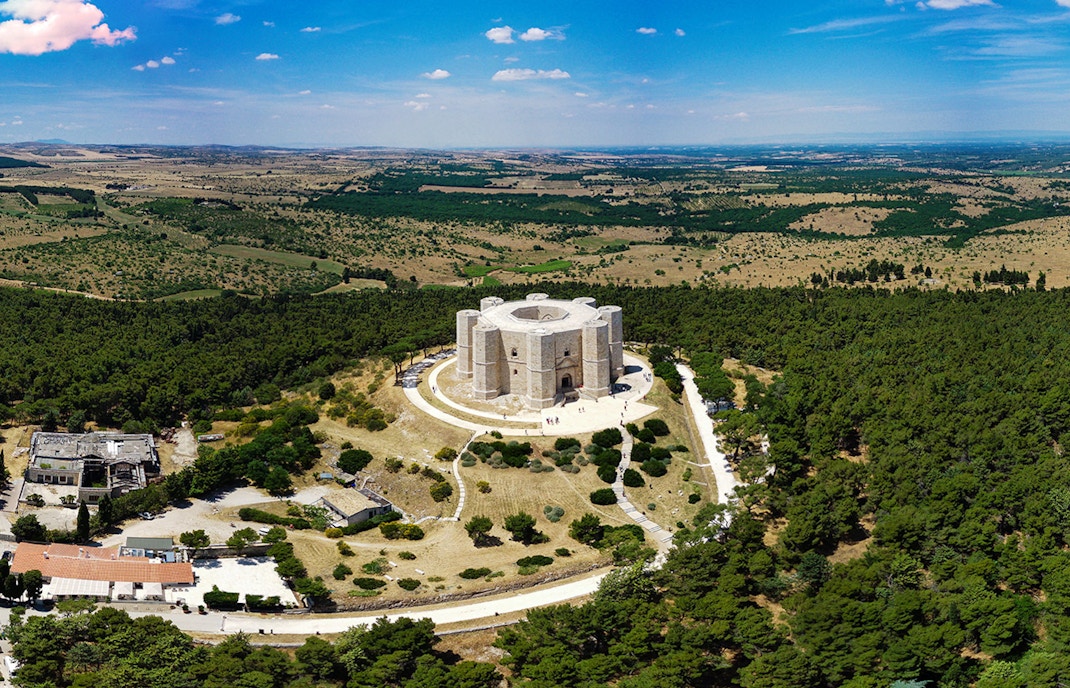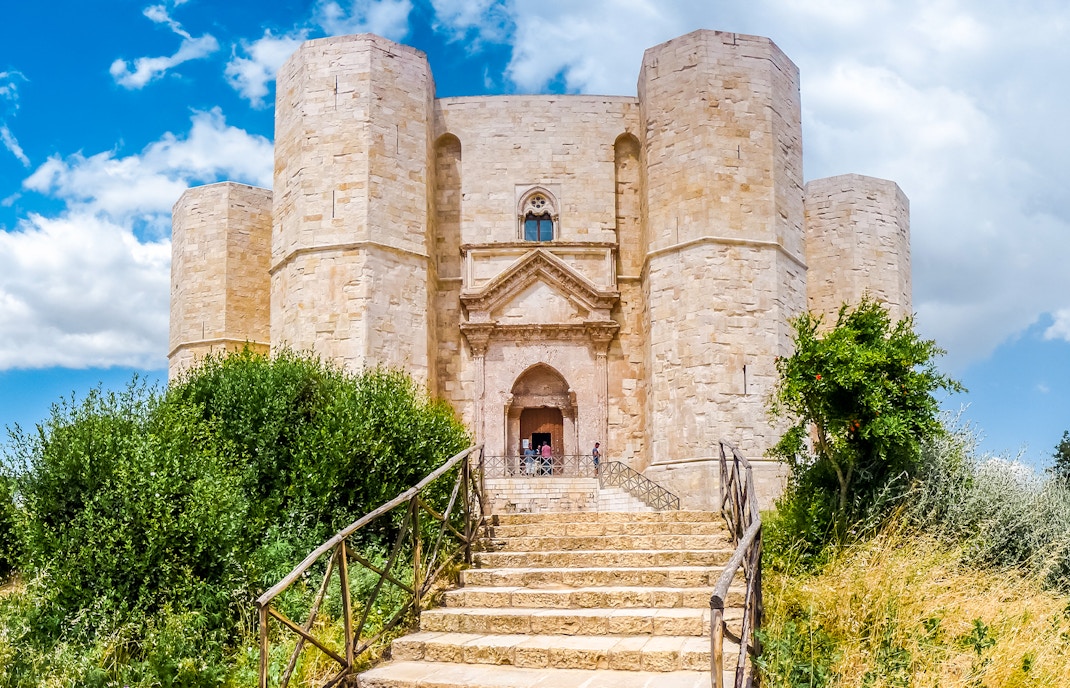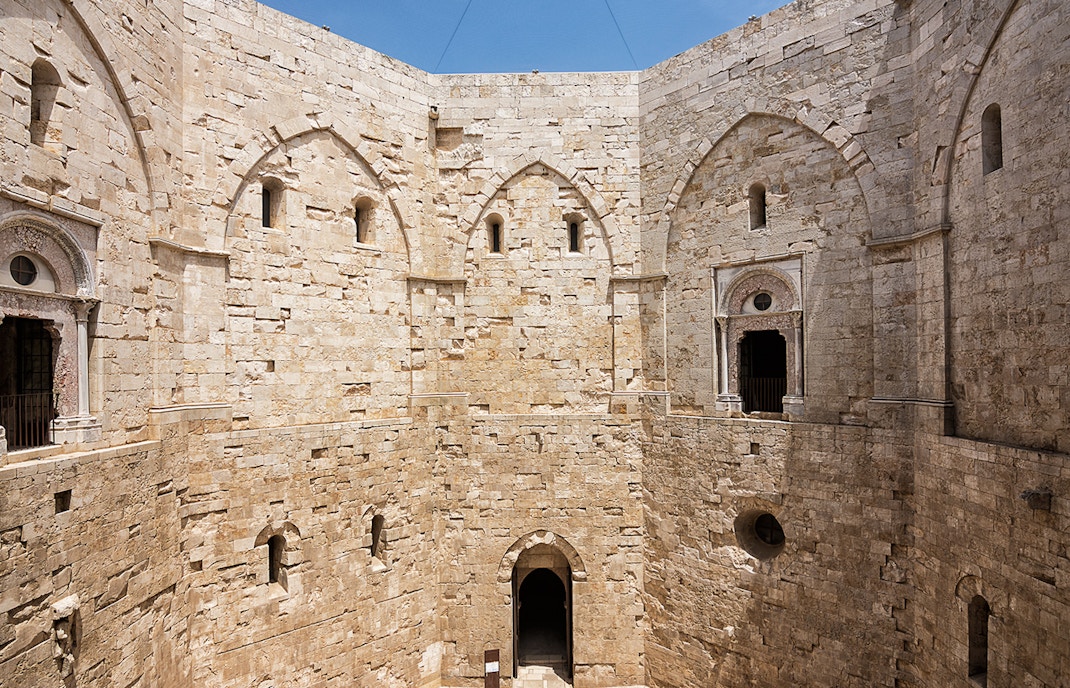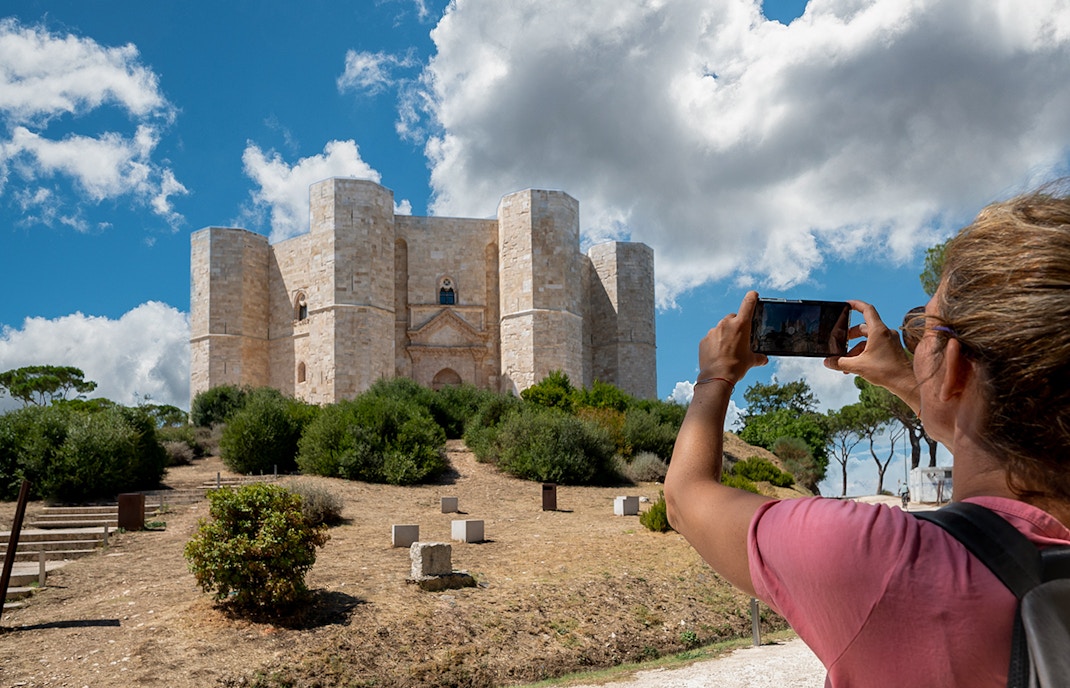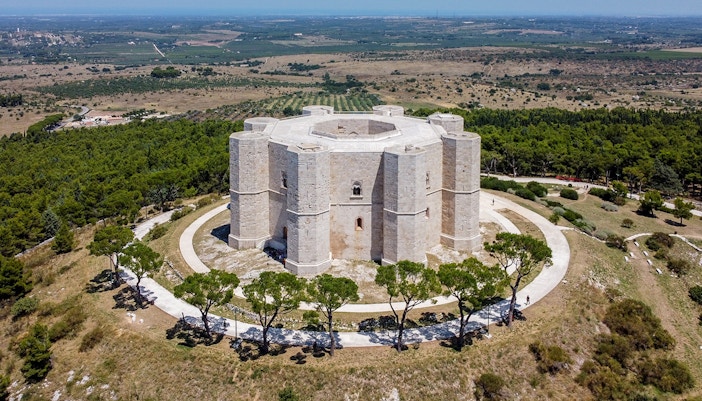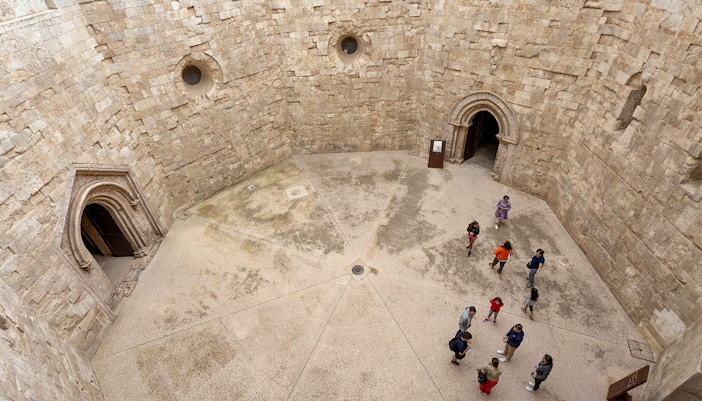13th Century
King Frederick II built Castel del Monte inheriting lands from Constance of Sicily. This unique castle, dating back to around 1240, boasts an extraordinary octagonal design with eight towers at its angles. What sets it apart is the absence of typical defensive features, making its purpose a subject of debate.
